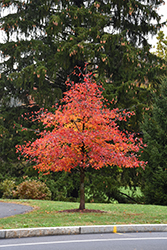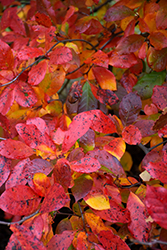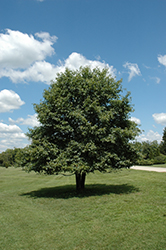It's all about ...
plants

Height: 40 feet
Spread: 25 feet
Sunlight:
![]()
![]()
Hardiness Zone: 5a
Other Names: Tupelo, Black Tupelo, Sour Gum, Pepperidge
Description:
One of the most spectacular and reliable fall coloring trees, turning brilliant shades of red and orange, and a very neat, pyramidal habit of growth; very particular about its growing conditions, needs organic, acidic soils, intolerant of urban pollution
Ornamental Features
Black Gum is primarily valued in the landscape for its distinctively pyramidal habit of growth. It has forest green deciduous foliage. The glossy pointy leaves turn an outstanding crimson in the fall. The furrowed black bark adds an interesting dimension to the landscape.
Landscape Attributes
Black Gum is a deciduous tree with a strong central leader and a distinctive and refined pyramidal form. Its average texture blends into the landscape, but can be balanced by one or two finer or coarser trees or shrubs for an effective composition.
This is a relatively low maintenance tree, and is best pruned in late winter once the threat of extreme cold has passed. It is a good choice for attracting birds to your yard. It has no significant negative characteristics.
Black Gum is recommended for the following landscape applications;
- Accent
- Shade
- Vertical Accent
Planting & Growing
Black Gum will grow to be about 40 feet tall at maturity, with a spread of 25 feet. It has a low canopy with a typical clearance of 3 feet from the ground, and should not be planted underneath power lines. It grows at a slow rate, and under ideal conditions can be expected to live for 70 years or more.
This tree does best in full sun to partial shade. It does best in average to evenly moist conditions, but will not tolerate standing water. It is very fussy about its soil conditions and must have rich, acidic soils to ensure success, and is subject to chlorosis (yellowing) of the foliage in alkaline soils. It is quite intolerant of urban pollution, therefore inner city or urban streetside plantings are best avoided, and will benefit from being planted in a relatively sheltered location. Consider applying a thick mulch around the root zone in winter to protect it in exposed locations or colder microclimates. This species is native to parts of North America.
This plant is not reliably hardy in our region, and certain restrictions may apply; contact the store for more information.


